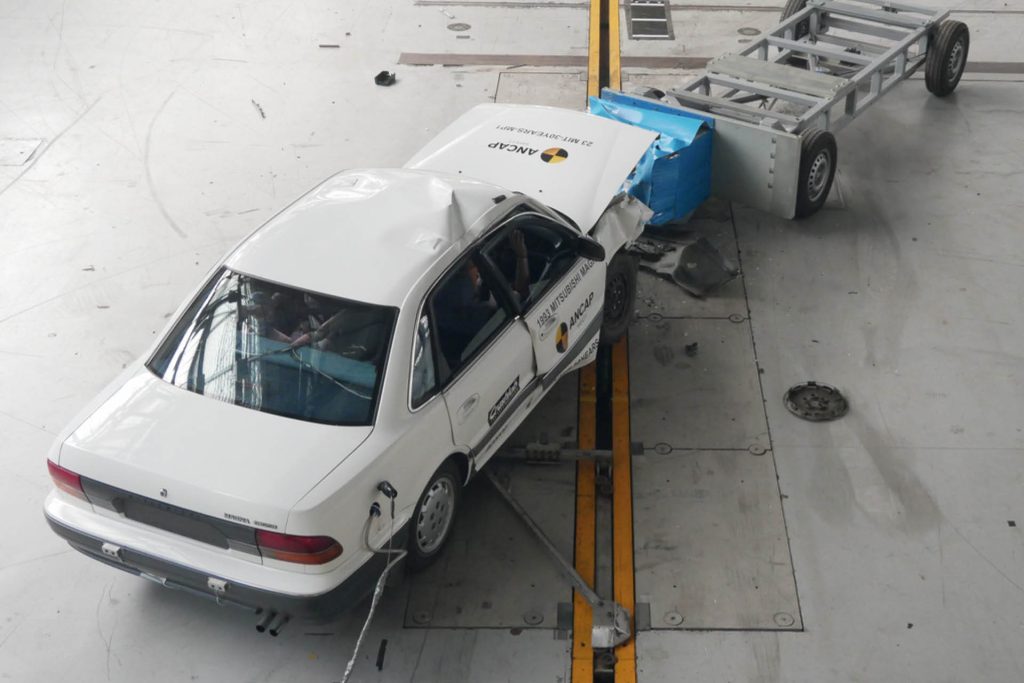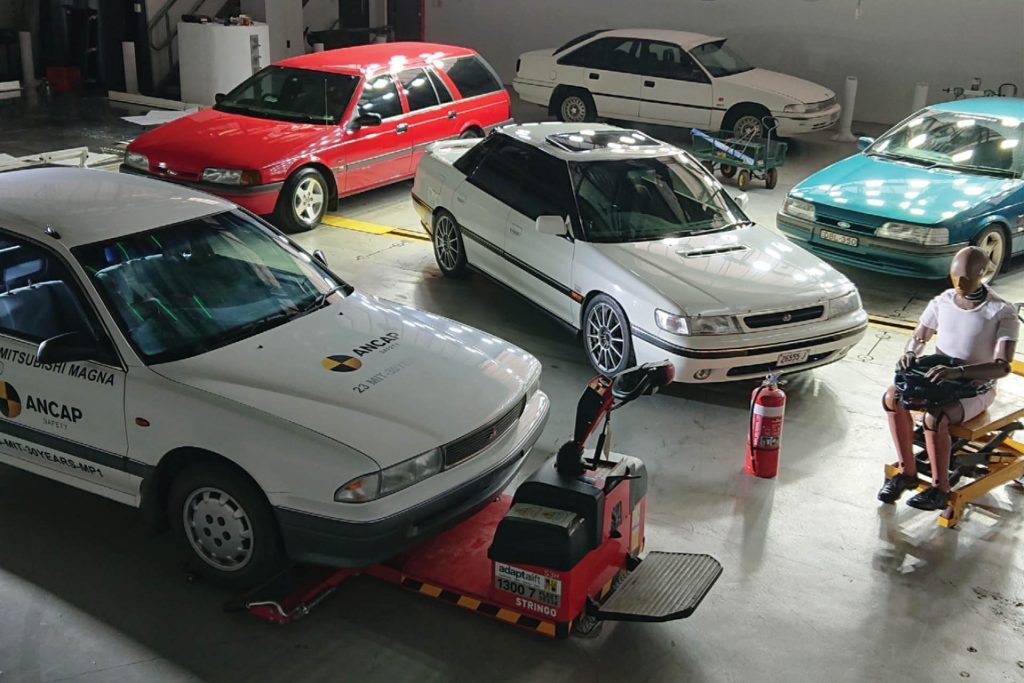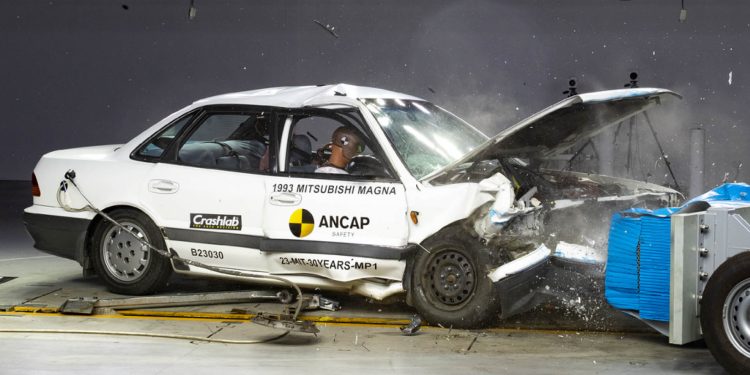How does a 30-year-old car stack up in a modern crash test?
Words: Harrison Wade | Photos: ANCAP
As part of the Australasian New Car Assessment Program’s (ANCAP) 30th-anniversary celebrations, the organisation decided to see how a 30-year-old car stacked up against modern-day safety standards.
The sacrificial car of choice was a Mitsubishi Magna, one of nine models the safety assessor featured in its inaugural test in 1993 alongside the Ford Falcon, Holden Commodore, Mazda 626, and several other models of the time.
Back then, the only test criteria was a single full-width frontal crash test at a speed of 56km/h, which was given a colour-code score based on the risk of injury to the front seat occupants. It wasn’t until 1999 that ANCAP adopted the star rating.

Last week, ANCAP decided to revisit the good ol’ days by crashing a 1993 Mitsubishi Magna live in front of owners of cars from the same period.
The results weren’t exactly pretty, with the dummy driver recording a high risk of serious or fatal skull fracture and brain injury due to contact with the steering wheel which wasn’t fitted with an airbag.
Other injury measurements included a high risk for the driver’s upper and lower legs, as well as the pelvis, while moderate injury risk was recorded for the chest. It was also found that the rear passenger would have sustained serious injuries.

“We’ve seen vehicle safety advance in leaps and bounds over the past 30 years as a result of ANCAP’s persistence and ability to influence consumer-driven change,” said Carla Hoorweg, Chief Executive Officer of ANCAP.
“Our founders were originally met with strong resistance from vehicle manufacturers, yet today, they’re the ones bringing forward new and innovative ways to prevent road crashes.”
“Back then, the cars we drove were just regular cars. We didn’t think twice about what safety they offered or didn’t offer.”





